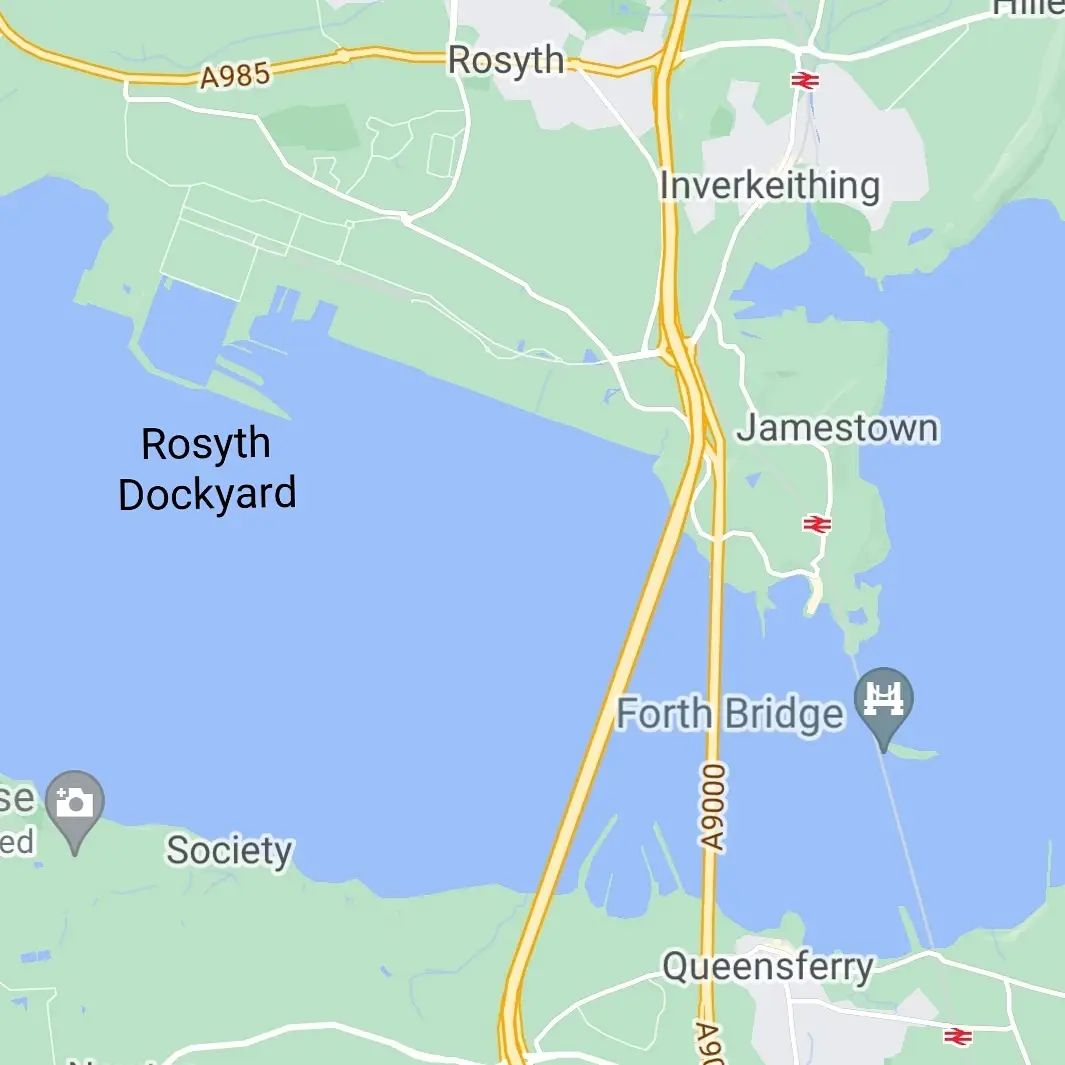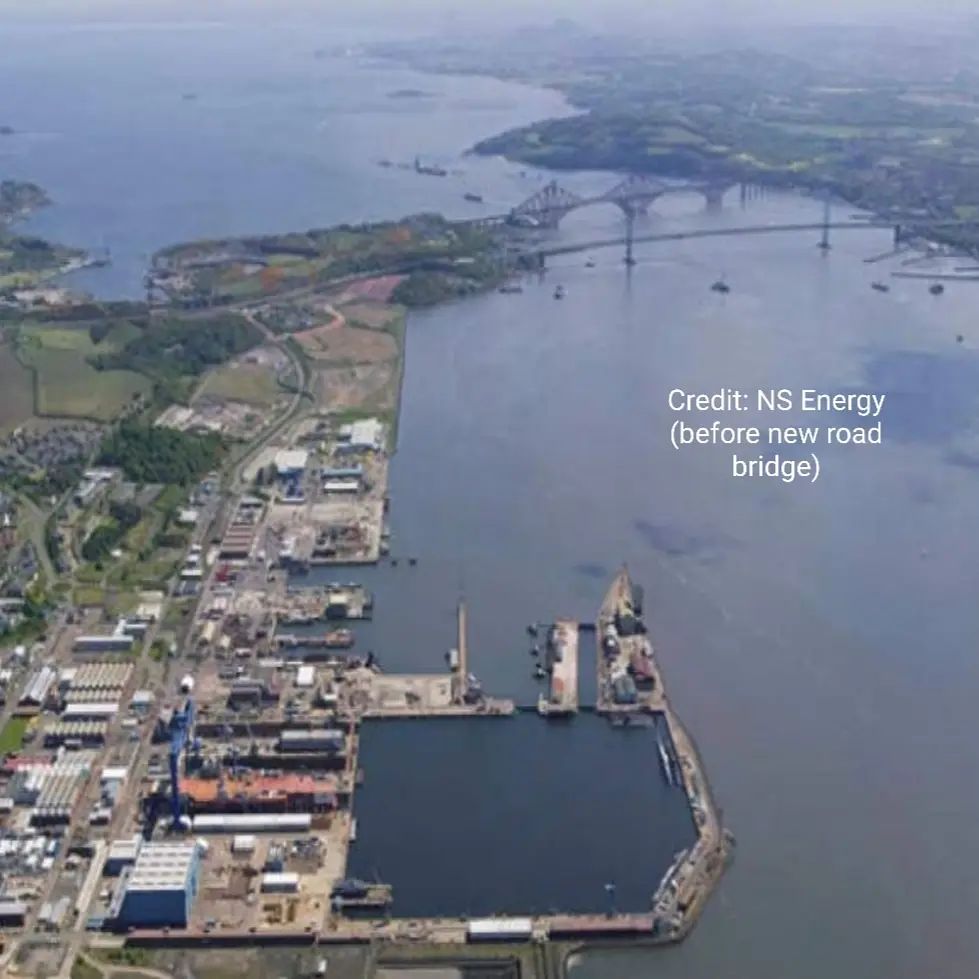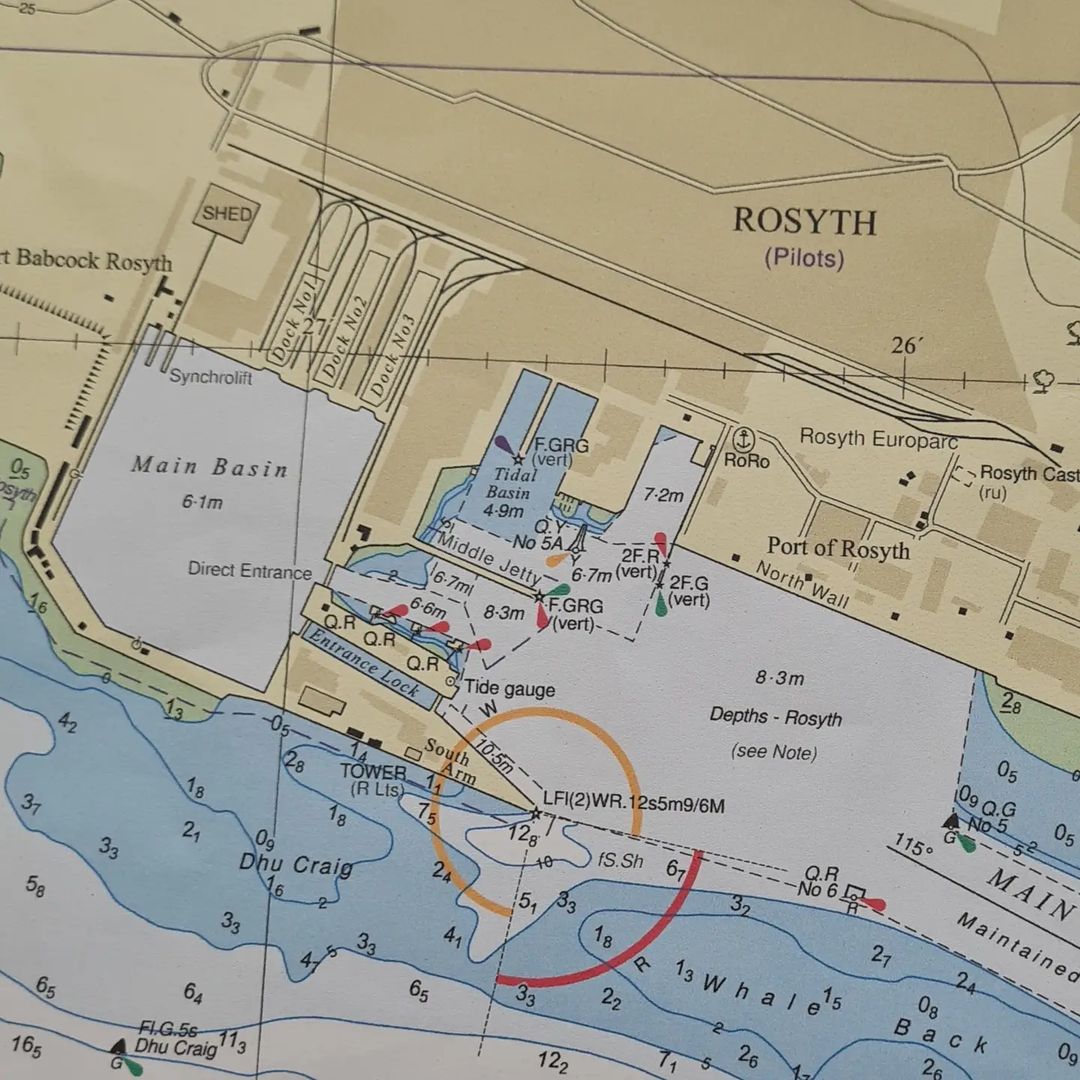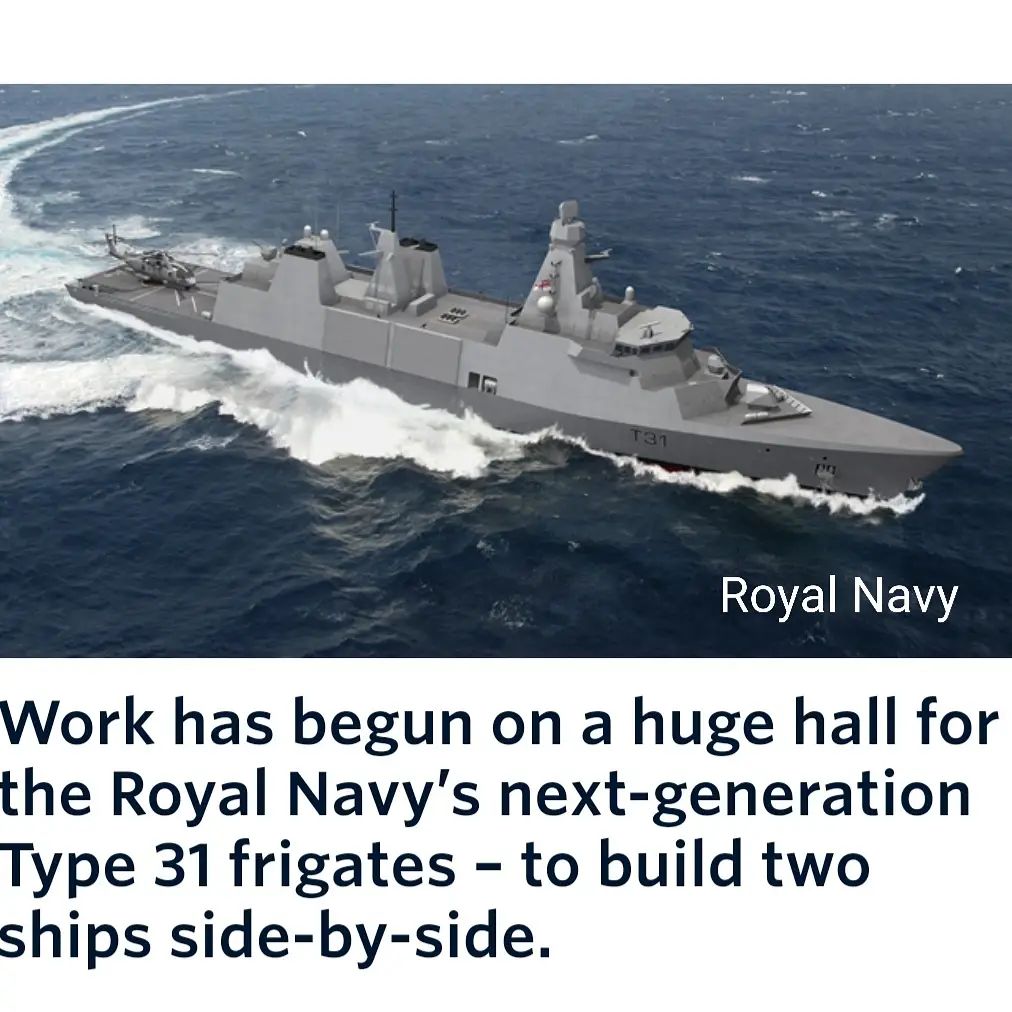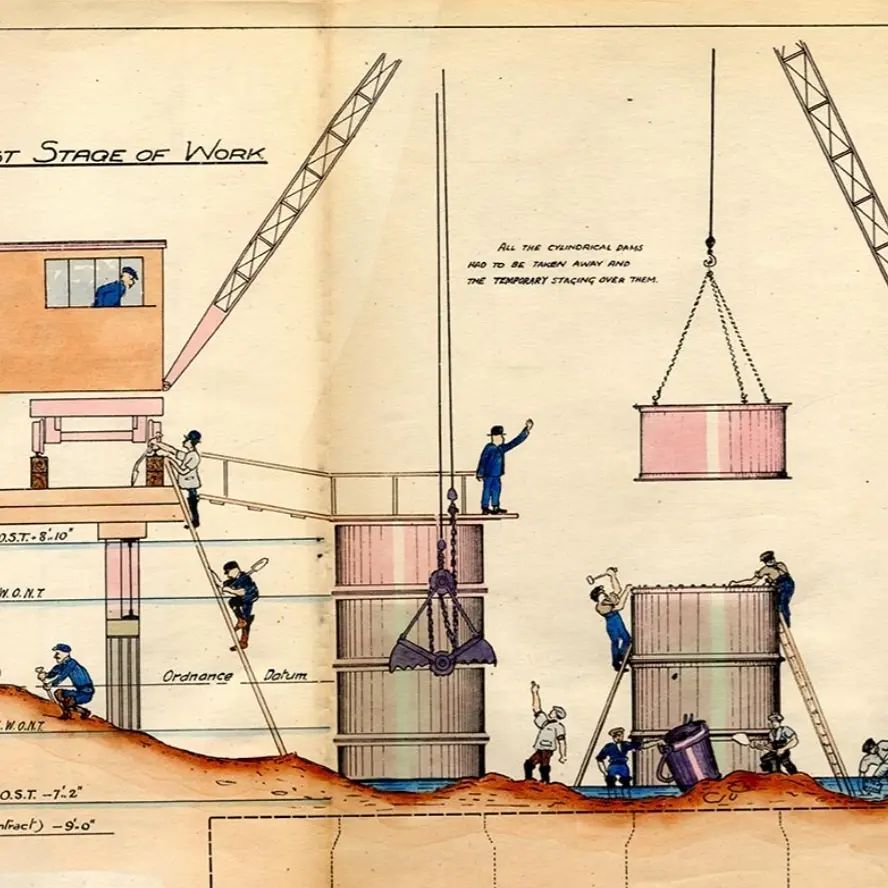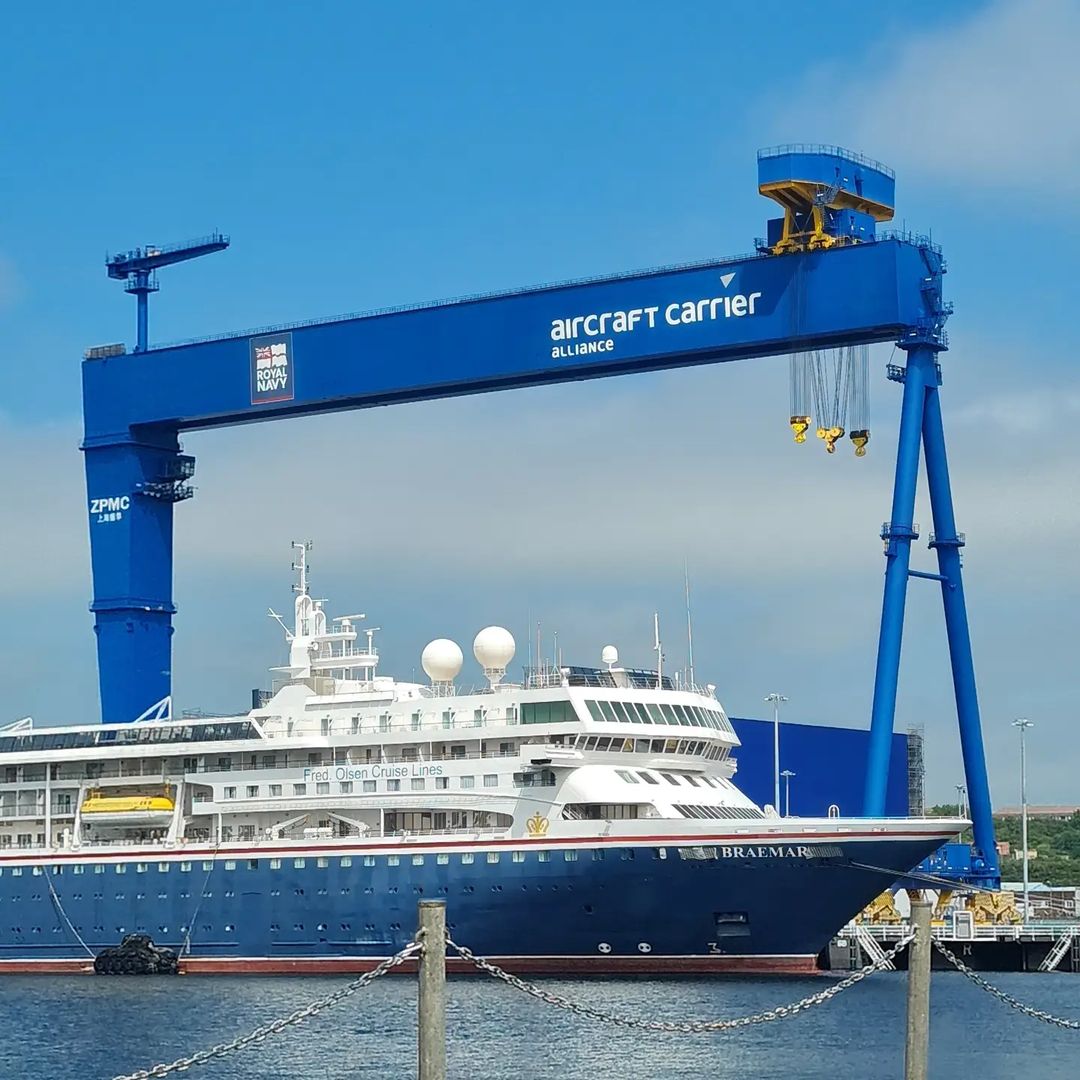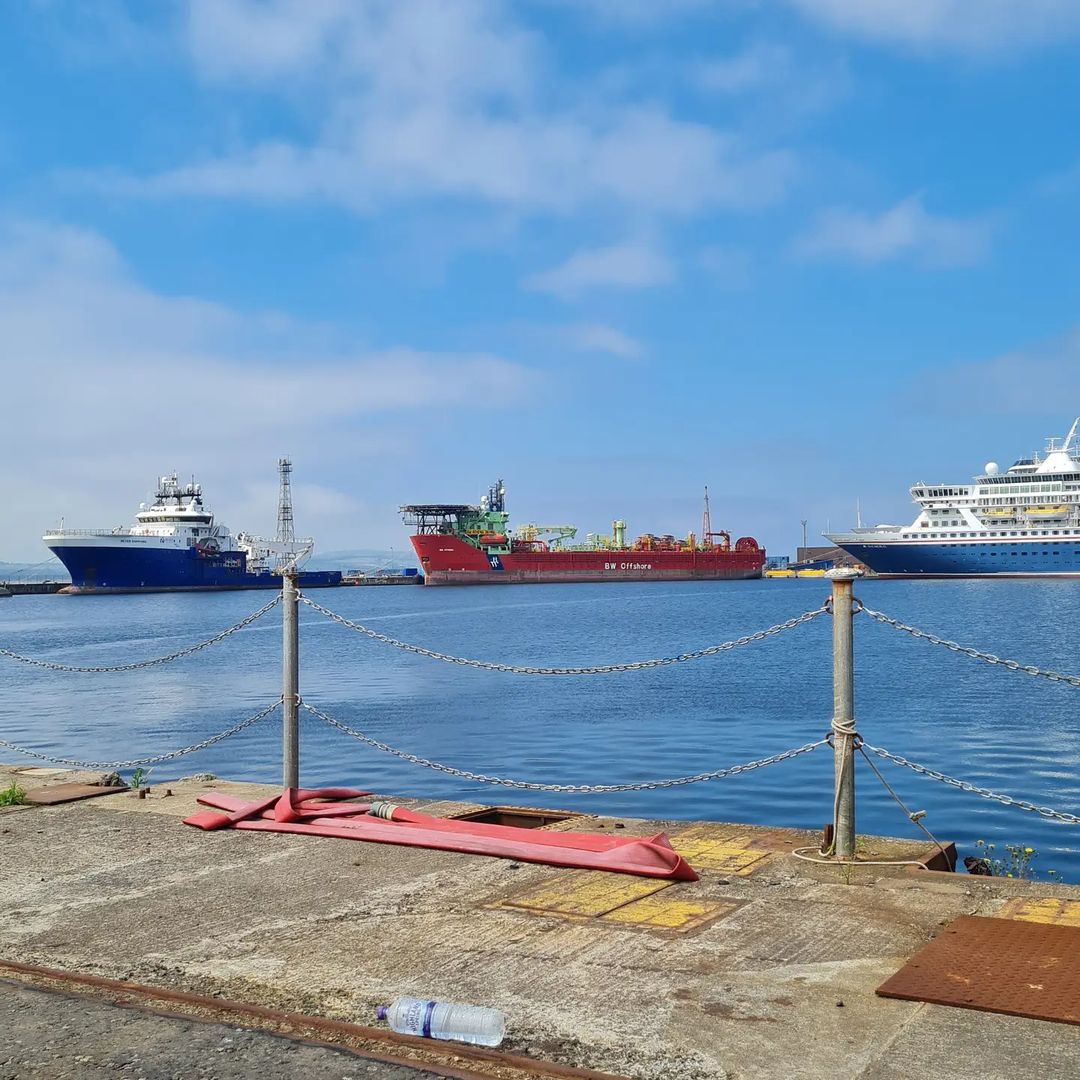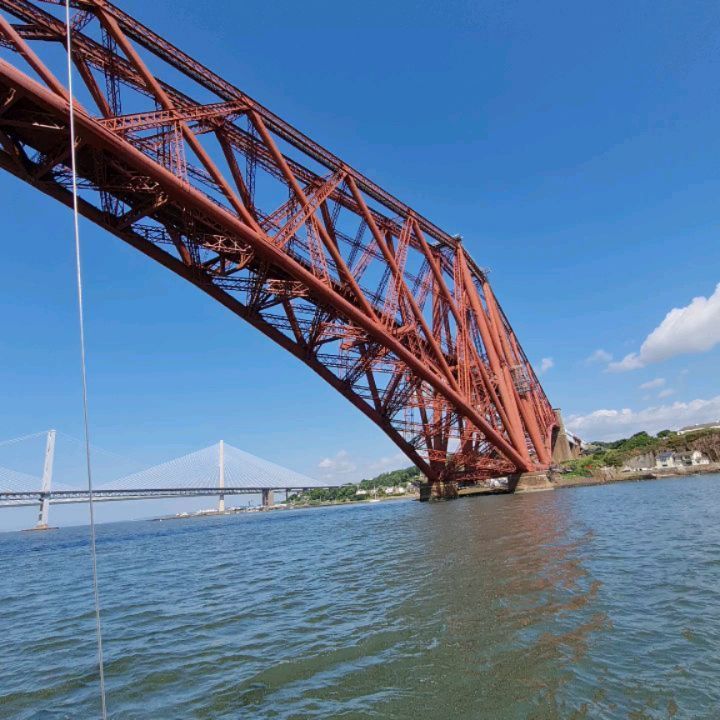Rosyth Dockyard
June 29, 2021
HM 132. Rosyth is a Dockyard not a Harbour. We were shown around by the brand new HM, Babcock employee Richard Johnston.
Built in 1909 as a Royal Navy base, by 1916 Dreadnought battleships were deployed here to fight in the North Sea. After WW2 it was home to the UK's submarine fleet and only privatised in 1997. Now used to build and dismantle RN ships, the two Queen Elizabeth Class aircraft carriers were launched here (photo 5) and five Type 31 Inspiration Class frigates (photo 6) are about to be built.
Most harbours slowly grow - Rosyth was planned to be large from the start: a 1,200 acre site and 2.5 miles of deep waterfront. Civil engineers sank 120 hollow concrete columns or monoliths (photo 7) to excavate the seabed from within and create a massive wet dock and 3 graving* (dry) docks.
Up to a week before my visit Gary Graves was the HM, having superseded the last "Queen's" Harbour Master. His challenge was to fit a brand new carrier, with a beam of 39m, out of a harbour entrance only 38m wide! Engineers had to widen the lock gates by 6 metres. He also oversaw the delivery of the largest crane in Britain - the Goliath (photo 8) - which was delivered by ship from China and had only 2m clearance under the Forth Bridge.
Today, Richard's job is diverse. After 5 years in the Royal Signals, Richard now oversees the importing of pumice stone from Turkey and exporting of broken glass to Holland as well as looking after 6 Fred Olsen cruise ships laid up, rather bizarrely, next to 6 RN submarines which Babcock are dismantling. Thank you Richard.
*The word 'graving' is an obsolete nautical term for the scraping, cleaning, painting, or tarring of an underwater body.
Built in 1909 as a Royal Navy base, by 1916 Dreadnought battleships were deployed here to fight in the North Sea. After WW2 it was home to the UK's submarine fleet and only privatised in 1997. Now used to build and dismantle RN ships, the two Queen Elizabeth Class aircraft carriers were launched here (photo 5) and five Type 31 Inspiration Class frigates (photo 6) are about to be built.
Most harbours slowly grow - Rosyth was planned to be large from the start: a 1,200 acre site and 2.5 miles of deep waterfront. Civil engineers sank 120 hollow concrete columns or monoliths (photo 7) to excavate the seabed from within and create a massive wet dock and 3 graving* (dry) docks.
Up to a week before my visit Gary Graves was the HM, having superseded the last "Queen's" Harbour Master. His challenge was to fit a brand new carrier, with a beam of 39m, out of a harbour entrance only 38m wide! Engineers had to widen the lock gates by 6 metres. He also oversaw the delivery of the largest crane in Britain - the Goliath (photo 8) - which was delivered by ship from China and had only 2m clearance under the Forth Bridge.
Today, Richard's job is diverse. After 5 years in the Royal Signals, Richard now oversees the importing of pumice stone from Turkey and exporting of broken glass to Holland as well as looking after 6 Fred Olsen cruise ships laid up, rather bizarrely, next to 6 RN submarines which Babcock are dismantling. Thank you Richard.
*The word 'graving' is an obsolete nautical term for the scraping, cleaning, painting, or tarring of an underwater body.

